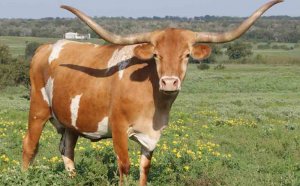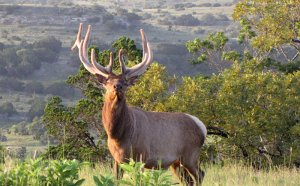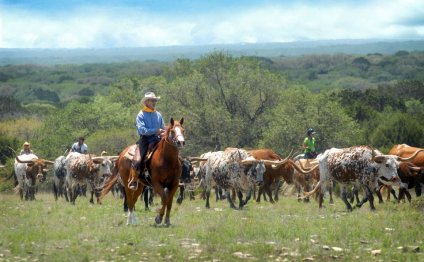
Ranching in Texas
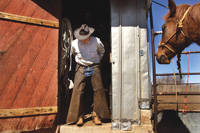
By Elmer Kelton
It was said that ranchers and farmers will be the original environmentalists. They have been directly and forcefully affected every day by their environment. Usually, first thing they do if they step outside at the beginning of the early morning is always to search for indication of a rain cloud. Rainfall or even the not enough it, the current weather cool or hot, the option of liquid tend to be issues with that they must deal everyday, year by year.
To whatever level technology has actually allowed, they usually have attempted to affect their particular environment with their benefit. A number of the results happen favorable. Other individuals have dropped sufferer toward unwritten law of unintended consequences, trading one pair of issues for the next.
A pristine environment prevailed for first Texas ranches that began inside late 1600s and very early 1700s with Spanish land funds across the Rio Grande. They were stocked by herds from Mexico, where a vast cattle empire currently flourished. Like the Indians who was simply indeed there initially, those Texas rancheros needed to accept the land because they discovered it, for they are able to do-little to enhance it. Their cattle watered on river or from whatever creeks and springs nature had offered.
Livestock survived or languished from the native vegetation, for this had been officially impossible to supply supplemental feed in just about any significant means. Stock raising broadened as pioneering padres established Catholic missions toward north. Each mission had herds and flocks meant to give priests and Indian converts. Early Spanish settlements north associated with Rio Grande included San Antonio de Bexar, La Bahía (later, better-known as Goliad) and Nacogdoches. Herds begun to increase around these.
Force from aggressive Indians pushed abandonment of many early land funds. As harried proprietors and employees retreated south regarding the Rio Grande, they left cattle behind. In addition, pets straying from loosely tended objective herds included with the numbers propagating in the wild. Few individuals thought a very good motivation to assemble or control all of them, for these were hard to manage along with little monetary value.
The Roots of Ranching
For a while, ranching came to be ruled by the missions. In which private providers been able to endure, they adopted as a whole the old Spanish mesta regulatory system, which put criteria aimed at setting up individual owners’ rights and obligations and minimizing territorial conflicts.
Numerous ranching traditions taken for granted these days had their origins in Spain, including branding and ear-marking to denote ownership. Texas ranching derived nearly all its doing work treatments from Spanish and Mexican cattle-handling methods. Also most of the ranching vocabulary was passed down from Spanish, though lots of the terms are Anglicized nearly beyond recognition. La reata became lariat. Chaparejos became chaps. The term remuda however denotes a band of horses. The Spanish term vaquero became buckaroo in English.
Ranching language developed through the Spanish, including the word 'chaps, ' which came from 'chaparejos.' File image.
Legal American immigration into Texas began with Stephen F. Austin’s Old Three Hundred in 1821, though illegal immigrants had imposed an elusive United states existence on eastern Tx redlands several years earlier on. Initial Anglo settlers brought together tiny herds of English-type cattle, mainly through the southeastern says. These began blending because of the plentiful Spanish stock currently right here. Generally, very early US Texans had been farmers to who cattle had been a second consideration. They were sluggish to grasp the Spanish-Mexican concept of ranching on a big scale.
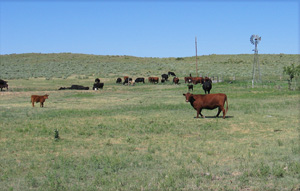 Most saw the undeveloped local environment as an obstacle to be conquered. They agreed with Austin’s statement that nature wasn't become acknowledged as it was but tamed for advantageous asset of man. Like their European forebears, they start to change it by plowing within the land and hacking away within forests and dense thickets therefore common in eastern Texas at that time. A clean industry and a cleared forest were regarded as signs of a progressive civilization.
Most saw the undeveloped local environment as an obstacle to be conquered. They agreed with Austin’s statement that nature wasn't become acknowledged as it was but tamed for advantageous asset of man. Like their European forebears, they start to change it by plowing within the land and hacking away within forests and dense thickets therefore common in eastern Texas at that time. A clean industry and a cleared forest were regarded as signs of a progressive civilization.
In Mexican colonial Tx, the ten years for the Republic, therefore the very early many years of statehood, crazy cattle had been so plentiful that meat had but little value. If a settler wished beef, he could venture out and kill an unbranded Longhorn. A cattle owner found little external market because Texas ended up being too far from Eastern states where there may are a demand. The only real investing market for cattle was along the Gulf Coast. Truth be told there, they certainly were slaughtered for his or her hides and tallow becoming delivered by-boat towards the Eastern seaboard. Almost all of the animal meat visited waste.
Trail Drives Begin
Because of the 1850s, some restricted trail operating had started, moving cattle afoot to such areas as brand new Orleans, St. Louis and, in one or more recorded instance, entirely to nyc. Though these very early experiments had but tiny economic impact on their state, they set the phase and trained cadres the popular drives that will start after the Civil War. They demonstrated it was possible to drive considerable herds for very long distances as they existed off of the land by which they passed.
The war and Union blockades over the Mississippi ended almost all of this traffic, though Texans carried on to push cattle as far as brand new Orleans to simply help provide Confederate troops.
Throughout the war years, the numbers of unbranded cattle working totally free inside south part of the state mushroomed as a result of neglect. Many working-age males went into Confederate army service, making home, ranches and stock facilities tended badly, if at all.
Their state experienced little actual harm during war. Union troops scarcely handled Texas earth except on some the Gulf Coast and along the Rio Grande from the lips up to about Laredo. But when the guns fell hushed, their state was economically drained. Cotton was its only significant money crop capable of finding an outside market and bringing in hard money. That has been insufficient.
The excess of near-worthless free-roaming cattle took in a unique relevance. Demand for meat was strong when you look at the North and East. Intrepid cattlemen, recalling the pre-war drives to distant areas, discovered that creatures worth a maximum of a buck or two on the home range might fetch twenty dollars when they could possibly be sent to an appropriate market. Jobless males house from war had been very happy to be drovers at a buck daily or less. The cattle could subsist on lawn along the way and, if managed properly, might even put on weight on the trail.
Early drives took Tx cattle to Sedalia, Missouri. As railroads forced westward, drovers switched destinations to such Kansas towns as Newton, Ellsworth, Abilene and Dodge City, each with its own turn. An average path herd numbered from 1, 000 to 2, 000 or 2, 500 mind, handled by ten to a dozen cowboys, along with a horse wrangler, wagon cook as well as perhaps a cook’s helper. Drives began with rising of this grass when you look at the spring, typically took 2 to 3 months and ended later into the fall. Often the most readily useful rates had been compensated early in the growing season, so there was a rush to-be one of the primary arrivals within delivery things. Those drovers whom came later in the autumn often found the market exhausted and oversupplied.
Share this Post
Related posts
Cattle Ranching in Texas
RANCHING. The word farm is derived from Mexican-Spanish rancho , which denotes home (headquarters) for the ranchero. In Tx…
Read MoreRanches in Texas
Swarms of bobwhite quail, pheasant, chukar and Hungarian partridge flutter and flap throughout the grounds of Joshua Creek…
Read More
